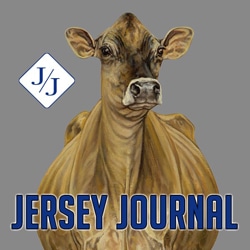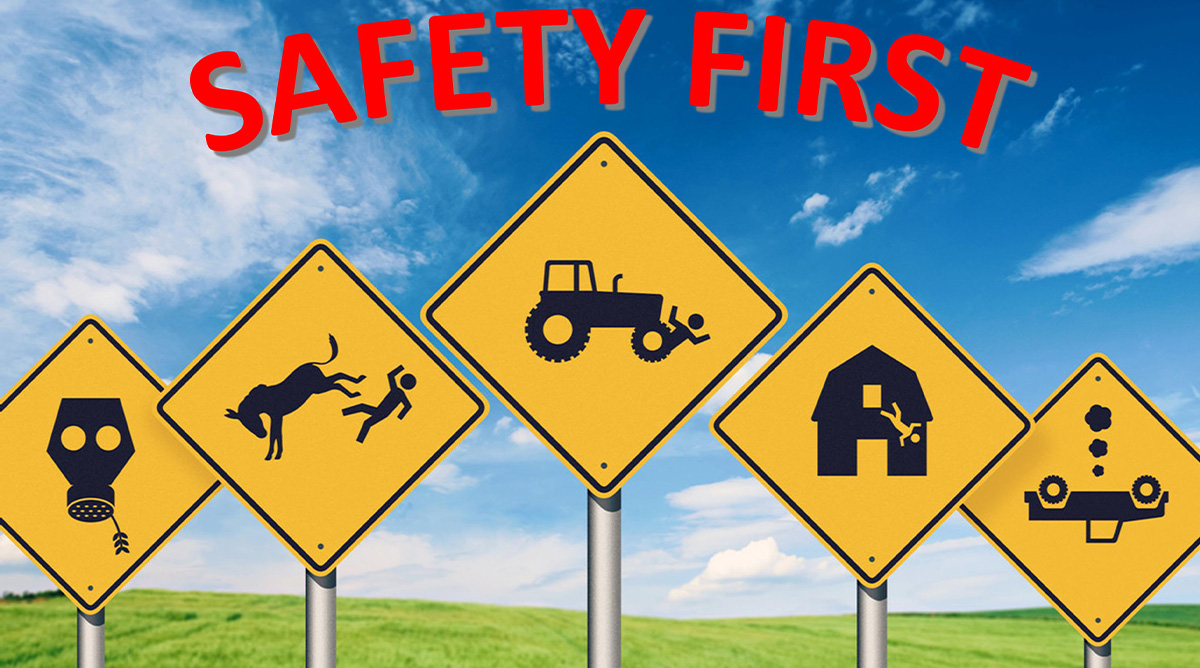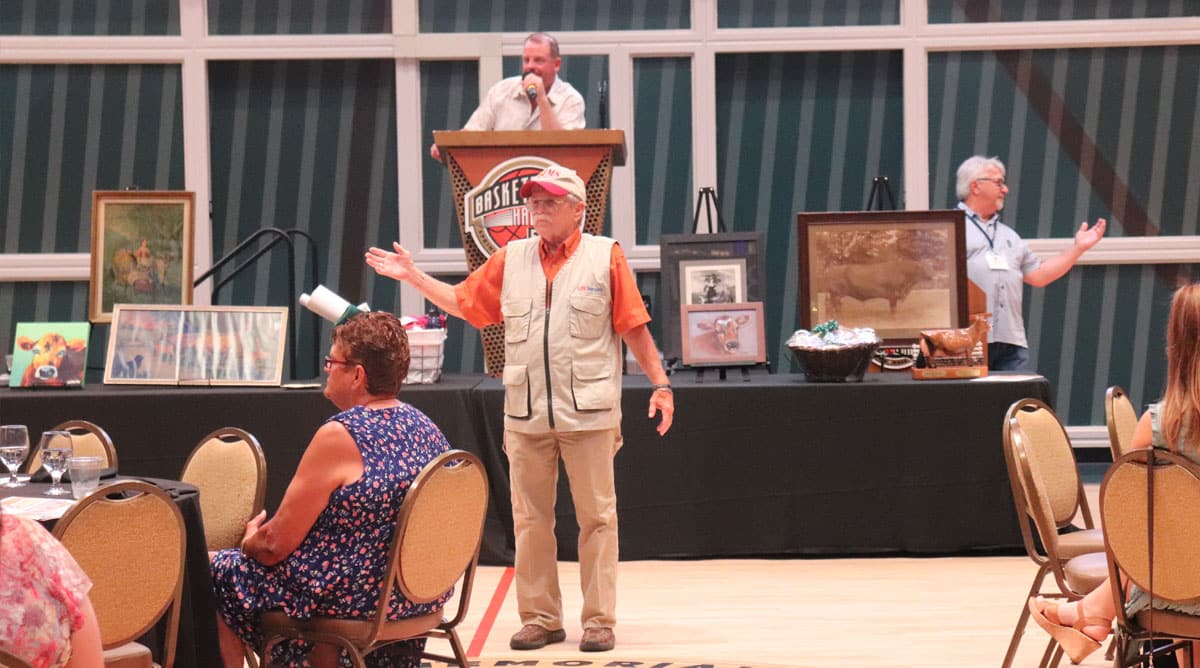Farm Safety: A Risk with Consequences
The sun rises, it’s time to feed the cows, no worries in the world, until your life flashes before your eyes. On every farm there are hazards we may or may not realize while working. We, as farmers, must stop and notice what harm could be associated with an action to prevent fatalities or injuries. Unfortunately, for nine-year-old Becky Ferry, Johnstown, N.Y., her life changed forever in a split second.
Tragedy Strikes
On a chilly day in her Carhartt coat, Becky was by the self-unloading wagon when it fired up. The next thing she knew, she was sucked into the power take off (PTO) shaft by her coat. While lying in her mom’s arms, her heart stopped. Their neighbors, who were paramedics, rushed to help and revived her. Becky was then rushed to the hospital where doctors found she had compound fractures in her knees and ankles, collapsed lungs, and a broken arm. For two weeks she was in and out of surgeries, and on Friday the 13, her legs were amputated.
Two weeks after the accident, Becky was woken up by her father. Her first words were,”Will I be able to still show my cows?” It was her first year in 4-H and she didn’t want to miss the opportunity, even though she had been showing since she was three. Showing cattle gave her a goal to walk again and she wanted to prove the doctors wrong who told her she wouldn’t be able to walk without a crutch.
Along with all of the injuries, she then found out a vertebra was out of alignment and was sent to another surgery at Shriners in Massachusetts. For six months, while in and out of physical therapy, Becky laid on her back.
PTO accidents are estimated to cause 40 fatalities and 150 amputations or other critical injuries every year. Every day, 100 agricultural workers suffer a lost-work-time injury.
Farm safety as a whole, is rarely addressed. Becky said, “Farmers are feeding the world, but nobody pays attention to how hard it is for the farmer. They are sacrificing their lives to work in the industry.”
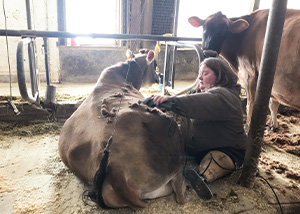
Taking the Wrong Step
Brandon Ferry, Hilbert, Wis., is a familiar face to Jersey breeders, owns Jersey cattle, and is a well respected dairy judge.
For Brandon, farm safety became number one after his three-year-old daughter fell into their manure pit. She was taken to a local hospital, then transferred by helicopter to the Children’s Hospital of Wisconsin. She spent a month battling fungal and bacterial pneumonia in the hospital while she slowly regained her strength in physical therapy.
There are a lot of potentially dangerous situations that can happen on a farm and like most accidents, they happen quickly.
Brandon’s advice to others is, “Make sure that there are fences and gates around manure pits and other places that can pose such risks and take the time to explain and point out the dangers to children. Just like we teach kids to look both ways before crossing a road, we need to reinforce the dangers that they should be aware of around a farm.”
Make sure to follow all guidelines and don’t take shortcuts because that is what could get you hurt. It is important to not only follow safety protocols, but have everyone trained properly on how to approach a dangerous situation and how to do their job safely instead of not taking the time to train them, especially youth. Brandon said, “Lead by example.”
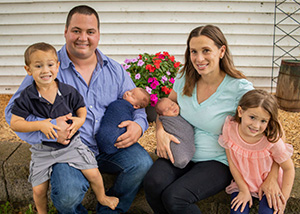
Family is Worth Fighting For
Mary Fleming, Delaware, Ohio, has been involved in farming her whole life. Farm safety has always been a topic that she was interested in. Unfortunately, one day her father got caught in a silo unloader in the winter time with his foot. He ended up spending a week in the hospital, had 200 stitches, got a bone infection, and had to go back to the hospital. Fleming said, “It’s the only time anyone but dad ever drove a combine and mom had to do all the harvesting.” At that point in Fleming’s life, her family didn’t really make a big deal about it. It just happened and it wasn’t something that could have been prevented or should have been avoided.
Fleming also had a friend who was crushed under a combine header, while combining beans and he wasn’t found until hours after the accident. She wrote a poem in his memory which highlights farmers’ strength, safety, and her own experience. “And the PTO’s, augers, and gears are covered with the right safety shield.”
With having five daughters, Fleming’s dad put the girls to work on the farm. Her dad said that he didn’t see a difference in boys and girls working on the farm because girls can do the same thing, however, they still had to deal with dangers and hazards. As Fleming got older she realized there wasn’t any real guidance when you should or shouldn’t have a child do a task on the farm and what risks are associated with the job. We know kids at a certain age should be able to do a certain level of task or activity, but there needs to be guidelines implemented. Fleming said, “There was some research done in New York State that showed those guidelines alone can prevent fatalities on farms by about 60%.”
Funding allowed research and action to take place. The Ohio Department of Health wanted to do a grant application for this federal funding for occupational health nurses in agriculture communities. That funding was focused on identifying injuries and fatalities, and looking at what we could do to prevent them. Fleming mentioned there was an outbreak of tetanus in her home county which traveled through the soil. She realized that a big percent of farmers would likely not have adequate protection, therefore, she took vaccines to them at meetings, fairs, and other similar events. This initiative led her to continue doing farm safety work.
Awareness
“We think accidents won’t happen because we’re smart, experienced, we’re careful, and we buy good equipment,” Fleming said. Those things aren’t what prevent accidents. What happens when an injury accident happens is a combination of factors that aren’t always predictable.
Mary said “We’re busy being productive and being efficient and trying to make a profit. So we don’t always sit back and analyze the safety side of things.”
When we focus our attention on the youth of today and farm work, precautions and safety must be top priority. Several years ago, 12,000 youth were injured on farms. Would you have ever thought of these numbers? Hence, why it is important we share stories and bring awareness to the topic. You may think you have the safest farm, but there is always something that could go wrong or is a hazard to you or others.
The best way to teach our youth is to talk to them.
Becky said,”It’s good to have someone who went through the experience, not just a video or lecture.” She is an advocate for farm safety and is able to share her experiences with youth. The kid’s jaws drop after she lists off all of her injuries. Becky said it is good to shock them to get their attention.
Before COVID-19, there was a program for fifth graders who would come out to the farm with 16 different stations on safety. Topics ranged from online safety, lawn mower, to even farm safety. In New York, 4-H does a tractor safety course that is required before the child may work on a farm. There are a lot of different ways in the world to get hurt no matter what. That’s why it is important to be proactive in reducing accidents.
Fleming said the farm safety days would use young people to teach some of those stations and they also found that the young people participating would go back to the farms and talk about what they learned. In fact, Fleming said, ”I was visiting with some friends who lived on a farm and the young boy with no agricultural experience, who went to safety camp, told the two farm boys they couldn’t get into the gravity wagon with grain because they could get trapped. A great example of how bringing awareness to our youth can make a difference.”
Importance of Education
Because adults and/or new employees tend to have a hard time sitting through training, we need to find a way to make training more interactive and personal. Farmers and employees should be trained to operate equipment and made aware of possible dangers.
Fleming said,” Big agriculture organizations sometimes don’t put enough into how they can help the farmers.”
Youth based organizations such as 4-H, FFA, and scouts should create a safety education program to bring awareness to the dangers and why guidelines are important.
It is important to make training programs for all ages readily available on all levels whether that is local, state, or national. Education is key in this topic and bringing awareness on the local level will be most impactful.
Becky said, “We need to get more into the digital age with videos to put good information out there for people to see. Whether that is a parody or actual information that draws people in and puts agriculture in a better light.”
The public needs to be educated about farm safety. They need to know that there are people that have gotten hurt, lost family, and still continue their job after they get hurt just as Becky did. Today, Becky still remains active on the farm and can run a skid loader, milk cows, and help around, but in a different fashion. Becky also shows her cows and is an American Jersey Cattle Association Director.
Any education is a good education. All family members and employees on the farm should take a tour together to understand how to deal with dangers. Fleming said, “If the farmer is caught in the grain bin and the auger is still running, the family members should know how to turn off the auger.” It is also important to know how to shut off the power supply.
Make A Difference
Unfortunately, even with safety protocols, there are still things that are out of our control. However, “You have to put negatives into a positive light,” as Becky says. She also stated at some point in an agricultural worker’s life, something might happen, but it’s what they do after that accident that matters most. It inspires others that even when you’re broken down, you can still get up and stand strong. Share your story or information regarding the topic in the media, create a story, or even a video to highlight this topic.
